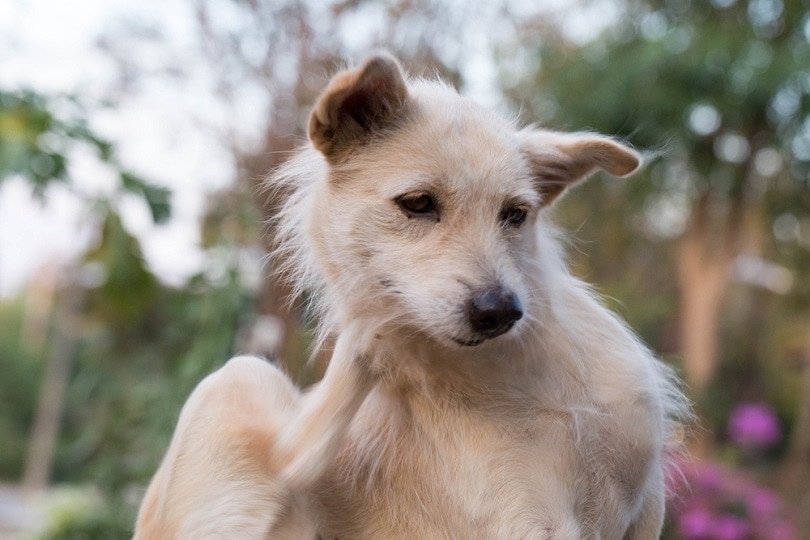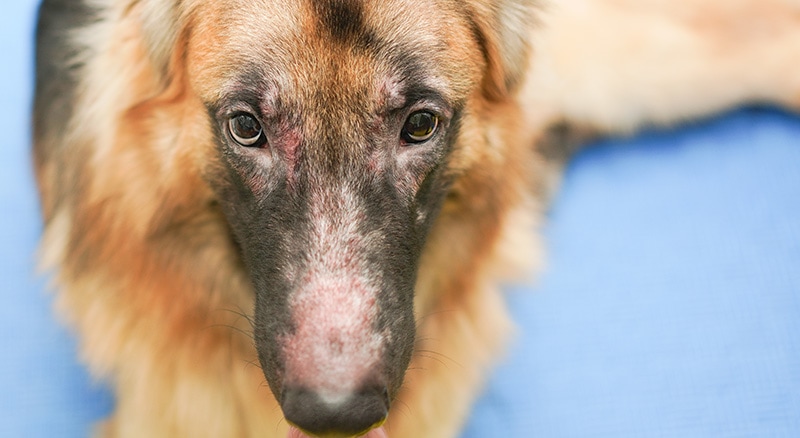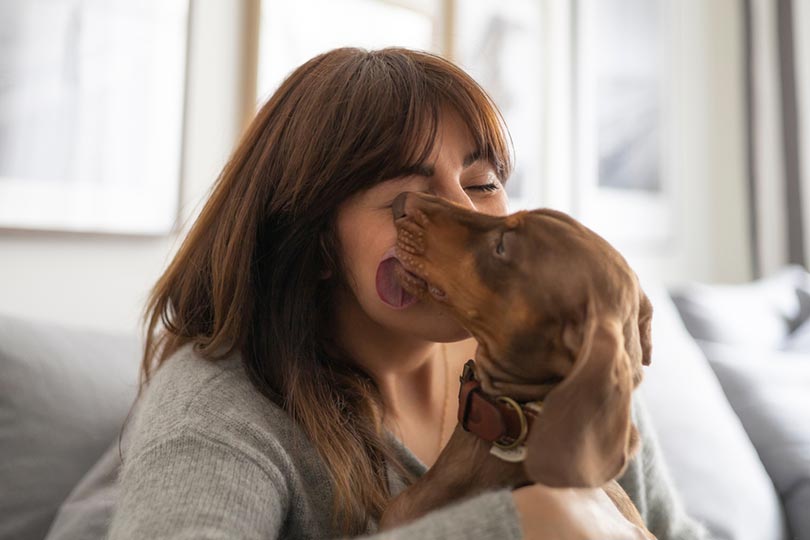Cane Corso Great Pyrenees Mix: Info, Pictures, Traits & Facts
Updated on
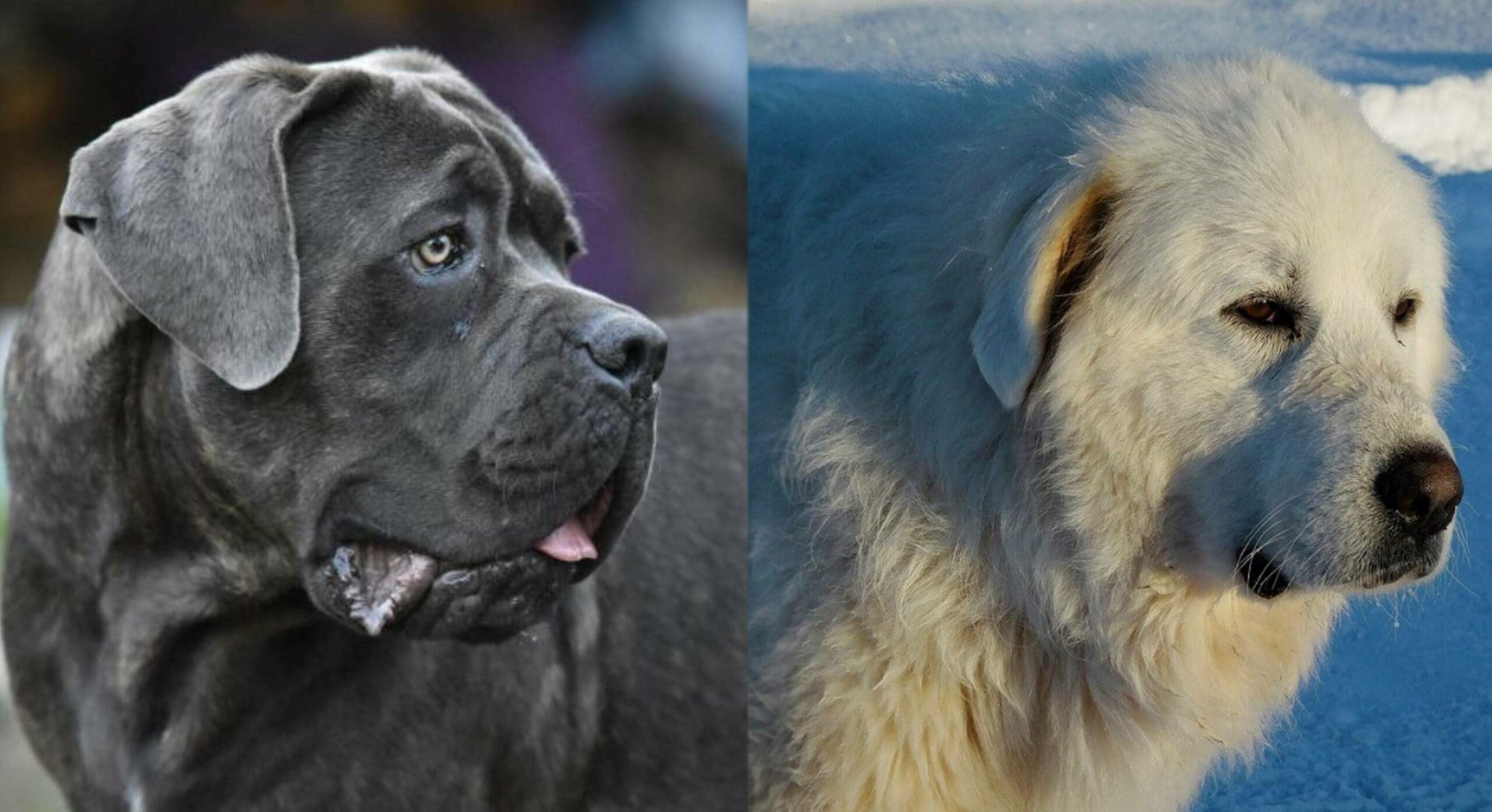
When you put a Cane Corso and Great Pyrenees together, you end up with a fairly large dog. Both of these parent breeds were originally utilized for guarding purposes, so this mixed breed can be utilized as a guard dog, too. They’re most commonly kept as companion animals, though. They’re pretty low-maintenance and very devoted to their family.
| Height: | 23–32 inches |
| Weight: | 88–165 pounds |
| Lifespan: | 8–12 years |
| Colors: | Almost any combination |
| Suitable for: | Guard dogs or companion animals |
| Temperament: | Loyal, vigilant, devoted |
However, they can be aloof towards strangers and require plenty of socialization to prevent aggression. For these reasons, we recommend avoiding these canines if you don’t have time available for socialization.
As a mixed breed, you never really know what you’re going to get with this dog. The puppies can inherit any trait from either parent. If you’re looking for a dog with very set traits, this isn’t the best option for you.
Cane Corso Great Pyrenees Puppies
The Cane Corso Great Pyrenees mix puppy is an ideal companion and guard dog. Their vigilant nature makes them excellent protectors. However, due to their low sociability and need for training, this breed requires a skilled owner. They are highly loyal and devoted to their owners and family. Nevertheless, this breed demands an owner with a high level of determination to raise them well as puppies.
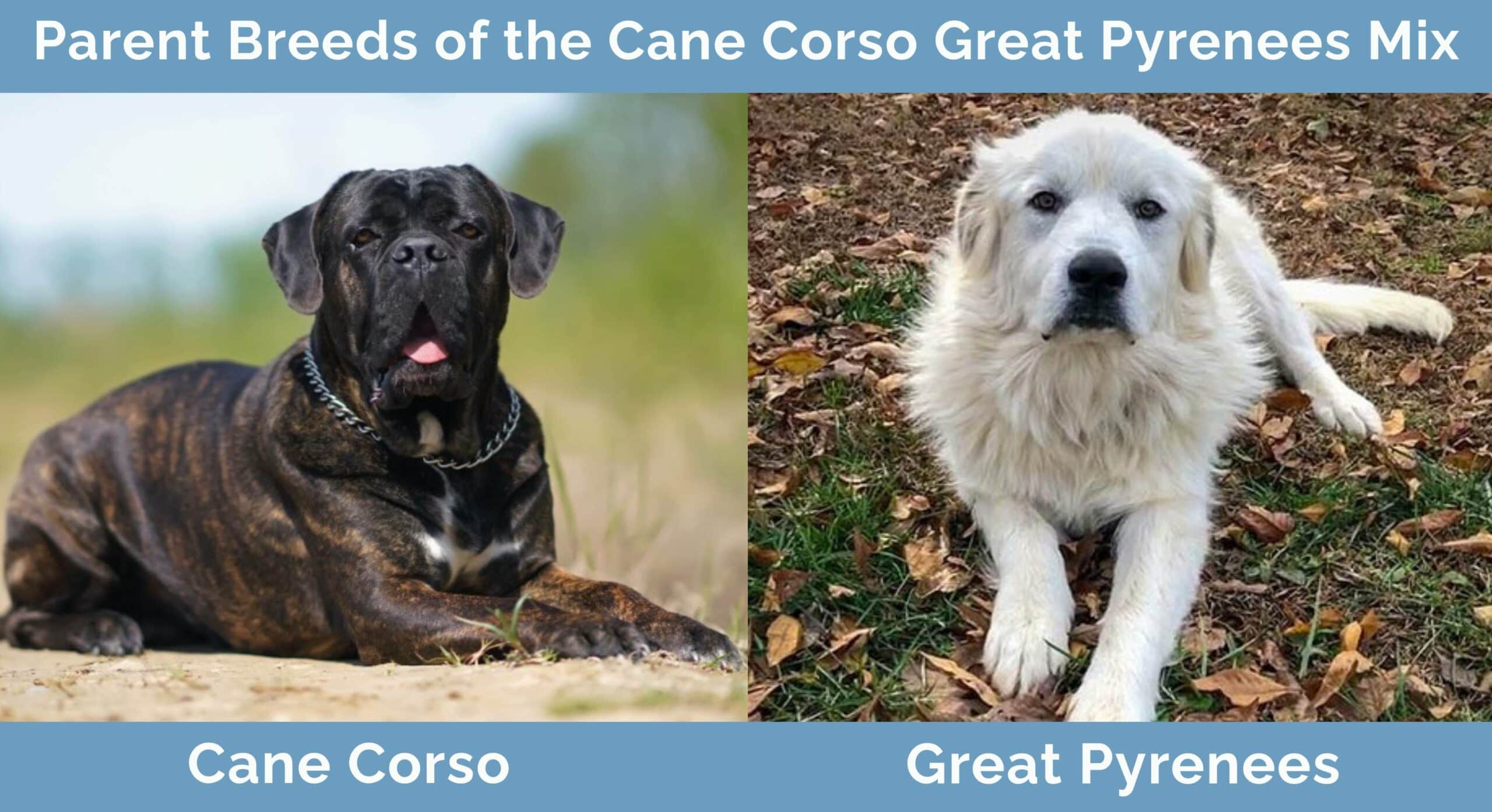
Temperament & Intelligence of the Cane Corso Great Pyrenees Mix
Usually, these dogs are imposing guardians. They’re extremely devoted to their owners and household. They have intense guarding instincts, so they tend to take readily to guarding your home, family, and flocks. For this reason, they’re wary of strangers. Lots of socialization is required to ensure that they aren’t fearful and aggressive of all new people. You don’t want your large dog being aggressive towards your houseguests.
Otherwise, this canine is rather calm and spends a long time laying around. They’re commonly referred to as “rug dogs” for this reason. They’ll often pick a favorite spot and spend much of their time laying around.
This breed doesn’t tend to take well to obedience training. You should teach them basic commands, like sit and stay. This helps keep them under control, especially due to their larger size. However, they tend to be independent and don’t listen to commands in real-world situations. Instead, they tend to listen to their inner instincts instead of their master.
Get them in training early. Group classes are a great option, as they also help with socialization.
These dogs do require some exercise. However, because they tend to laze around for much of the day, they don’t require very much. A fenced-in yard can provide them with enough exercise if you play fetch or do something similarly active. These dogs are fine staying alone for much of the day, as long as you properly meet all of their needs.
They don’t reach maturity until closer to 2 years of age due to their larger size. Therefore, you can expect them to keep their active, playful nature longer than other dogs. Even as puppies, they tend to be more laid back than other dogs.
Are These Dogs Good for Families? 👪
They’re extremely devoted to their families. They’re gentle and affectionate, often making great dogs for children. Their larger size allows them to put up with a lot from smaller kids, and they aren’t likely to be fearful of an excited toddler. Early socialization is vital to help with this, of course. You should introduce your mixed-breed puppy to babies and children at an early age.
Their larger size can make them a bit challenging to keep in smaller homes, though. They aren’t very active, so they don’t need tons of room. However, if you already have many children, you may find it difficult to keep this large dog, too.
Does This Breed Get Along with Other Pets?
This mixed breed is usually okay with most other animals, including cats. Early socialization is important. However, they’re naturally inclined to guard flocks, which of course means not eating their charges. They may attempt to guard other animals, as that was their original purpose.
Things to Know When Owning a Cane Corso Great Pyrenees Mix:
Food & Diet Requirements 🦴
These dogs don’t have many special requirements. However, they are very large. Therefore, they eat a lot. You’ll need to budget quite a bit for food. These dogs often eat cups a day, which can cost quite a bit. These dogs aren’t particularly prone to obesity, though they do require regular exercise. You should watch their food consumption, as their lazy nature can lead to them eating more food than they really need.
You should feed this breed the best food you can afford. However, because they are so large, it isn’t unusual to opt for more budget-friendly food.
Exercise 🐕
These canines don’t need tons of exercise. While some exercise daily is certainly recommended, they don’t need as much exercise as you might expect. A daily walk is often plenty. You can also play fetch or a similar game to get their exercise needs met. If you don’t exercise them properly, they may become bored and destructive. Due to their large size, this can be troublesome.
Puppies require more exercise than adults. However, you should never force-exercise a puppy, as this can cause their growth plates and joints to become damaged. In other words, let the puppy exercise as much as they will, but don’t make them finish the walk if they don’t want to.
Be sure to mentally exercise your dog too. Your canine can get bored when kept as a companion. Without a flock to guard, they need some other way to entertain themselves. Training, games, and puzzle feeders are great options. Walks that allow for plenty of sniffing time are also a good option.
Training 🎾
These dogs are quite intelligent. However, they aren’t particularly obedient. They tend to follow their own instincts and ideas—not listen to their owner. They may know what a command means, but that doesn’t mean they’ll listen to it.
You should begin training early. We recommend group puppy classes. If you adopt your dog after puppyhood, you can find adult training classes instead.
Socialization is vital for these dogs, more so than basic training. They can be aloof and unsure of strangers, so they need to learn that not all strangers are enemies. Introduce them to lots of people at a young age, as well as many kinds of animals. Often, they’re much more understanding with other animals than people.
Grooming ✂️
What coats these dogs get will vary. Some may take after the Great Pyrenees, while others may take after the Cane Corso. Their coat type will absolutely determine what grooming they require, so it’ll be up to you to watch your dog carefully to ensure their needs are met. When in doubt, ask a professional groomer.
The Cane Corso sheds regularly but doesn’t require much brushing. These dogs do shed heavily twice a year, so you’ll need to brush more often during the spring and fall months. On the other hand, Great Pyrenees can become matted, but they don’t shed as much. They have a dense undercoat that can shed, especially seasonally.
If your dog has long fur, you may decide to keep it clipped. Their fur can get rather dirty, and keeping it clipped helps with this somewhat. You may need to bathe your dog often if it has longer fur, especially if your dog spends a lot of time outside.
- See Also: 11 Best Dry Dog Shampoos
Health and Conditions ❤️
- Luxated Patella
- Eyelid Problems
- Hip Dysplasia
- Bone Cancer
- Bloat
Mixed breeds tend to be healthier than purebred dogs, as they have access to a larger gene pool. They tend to inherit genetic problems less often. However, their larger size does lead to some problems. They tend to have joint issues, as they’re carrying a lot of weight around. This may include bone cancer, hip dysplasia, and luxated patella. Keep an eye out for these problems, as it is often best for them to be treated right away.
You should also be cautious about bloat. We don’t know exactly what causes bloat, however, bloat seems to happen most commonly in larger dogs. These dogs are absolutely huge, so they are prone to it. Bloat occurs when gasses get stuck in the stomach, causing it to expand. It often doesn’t go away by itself and can be deadly when left untreated. It is considered an emergency and often requires surgery to fix.
Be sure to adopt these canines from a breeder, when possible, to help decrease the chance of health issues.
Male vs. Females
These canines don’t differ much from males to females. However, females are often substantially smaller than males. Because this breed varies so much, though, this isn’t always the case. Some females may be bigger than certain males.
3 Little-Known Facts About Cane Corso Great Pyrenees
1. These dogs aren’t terribly common.
While some mixed breeds have taken off, this isn’t one of them. They aren’t terribly common, so you’ll probably have a hard time finding them.
2. They can vary a lot.
As a mixed breed, these dogs vary a lot. They can end up like either of their parents, though they are often somewhere in the middle. Don’t expect them to be exactly as we describe here, as it is challenging to make generalizations about mixed breeds.
3. They’re great guard dogs.
This canine may be regularly kept as a companion animal. However, they make wonderful guard dogs, too. Therefore, if you have something in need of guarding, they may be a suitable choice.
Final Thoughts
Cane Corso Great Pyrenees mixes aren’t all that common. They tend to be rare, actually, as they aren’t one of the most common mixed breeds out there. They’re often kept as companion animals, but they also make great guard dogs. Often, they’re low maintenance and well behaved and they don’t require much exercise.
With that said, they will require grooming, as they can have longer fur. They practically always shed, so they will need some brushing no matter what coat they have.
These canines require a lot of socialization. Their guarding instincts make them quite aloof towards strangers, and socialization is required to prevent them from being aggressive. They aren’t the most obedient. However, they tend to be pretty well-behaved.
Featured Image Credit: Left – agutti, pixabay | aprilsuzi, Pixabay




